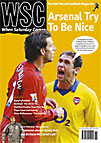 Steve Gibson first got involved at Middlesbrough to save the club from extinction in 1986. Jon Lymer looks back at the lowest point in Boro's history
Steve Gibson first got involved at Middlesbrough to save the club from extinction in 1986. Jon Lymer looks back at the lowest point in Boro's history
The bond between Middlesbrough’s chairman, Steve Gibson, and the club’s supporters is uncommon in both its intensity and its longevity. This is because when the club was at its lowest ebb, Gibson acted as any of us would have done, rescuing the club from a seemingly impossible position and sticking valiantly to the task of rebuilding and transforming it.
In the summer of 1986, Middlesbrough FC collapsed and was officially pronounced dead on local television. A long illness had begun with the departure of manager Jack Charlton in 1977. Charlton left a side he rated as “one player short of winning the League” and the rot set in. Players left, standards declined, crowds dwindled. Boro were relegated in 1982 and struggled against further demotion for the next four seasons. In April 1985, a loan of £30,000 was obtained from the Professional Footballers’ Association to pay players’ wages. Then, in the final game of the 1985-86 season, Boro slipped meekly into the Third Division and imploded.
During the close season, the Inland Revenue claimed over £100,000 in tax arrears, which the club were unable to afford. The judge in the subsequent court case issued a winding-up order against Boro, who had been in the hands of a liquidator since May. And that should have been that. It had been a long time coming and many fans felt a slight sense of relief that it was finally over. But then, in typical Boro fashion, a desperate fight to save the club began and the awful, nagging feeling of hope began to gnaw away at us.
The result of this fight was a gut-wrenchingly agonising start to the 1986-87 season. The club had officially been saved with only ten minutes to spare before the expiry of a Football League deadline by a consortium driven by Steve Gibson and backed by the chemical company ICI. The euphoria was short lived. The authorities had granted Middlesbrough continued League status on the proviso that they could fulfil their first fixture, a home game against Port Vale. Ayresome Park, however, was in no fit state to host a football match, its famous iron gates had been chained up and behind them the decay had taken its toll.
A solution seemed to have been found when it was announced that arrangements had been made to play at Hartlepool’s Victoria Park, but Port Vale, in a move that will forever endear them to Middlesbrough supporters, objected. This wonderfully sporting gesture was somewhat surprising, given that Middlesbrough were asking to play their first home game away from home. After an anxious wait, the Football League overruled Vale’s objections and allowed the game to go ahead.
On August 23, 1986, a modest 3,690 supporters made the short journey to Hartlepool, their mood far from buoyed by rumours that the financial picture painted when the club was wound up was far from accurate. Creditors were continually coming forward and debts believed to have been around £800,000 began to rise to over £2 million. Against this backdrop, there was a feeling that ICI’s commitment to the cause was only good for so much debt.
An untidy game finished two each, with both of Boro’s goals scored by Archie Stephens, and nobody was really sure how long we could struggle on. The game itself seemed to perfectly reflect the club’s current situation of hope tempered by the contin- ual emergence of further hurdles to overcome. Leading 2-0 at half-time, Boro had allowed themselves to be dragged back to parity. Middlesbrough were still very much hanging by a thread.
Quite staggeringly, the game at Hartlepool, while locked out of our own ground, proved to be a genuine turning point. The club which had allowed itself to fizzle out apathetically had developed a new mood of optimism and determination. The consortium fought hard to stabilise the finances and the team were successful on the pitch, gaining successive promotions to the First Division. A heady atmosphere erupted from the years of gloom and, gradually, the game at Victoria Park came to be viewed with fondness and pride. Few, if any, who were there could have envisaged that the club would evolve to the point where we would field teams packed with stars such as Phil Stamp, Noel Whelan and Dean Windass.
From WSC 201 November 2003. What was happening this month